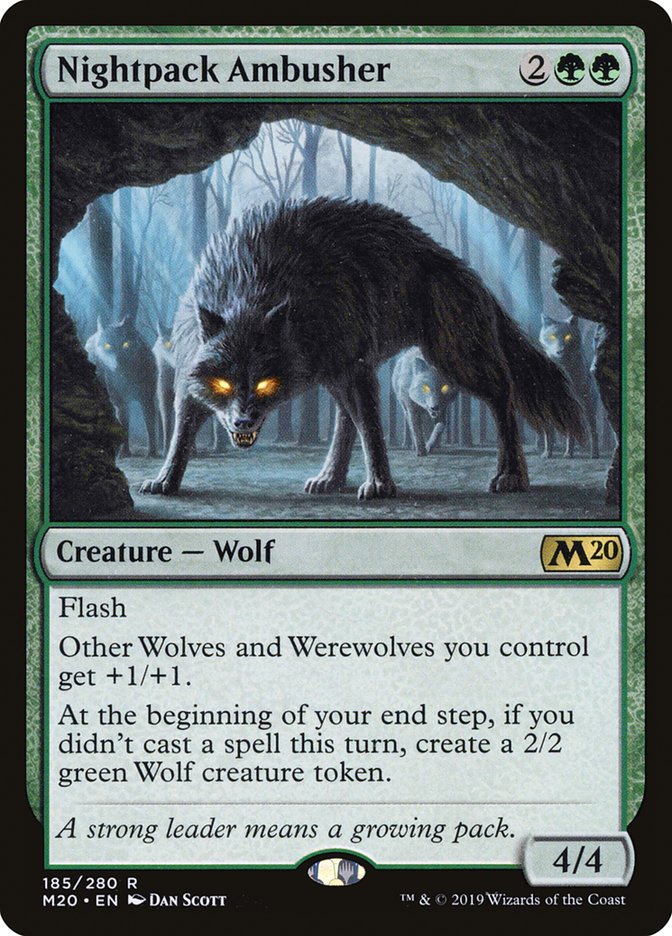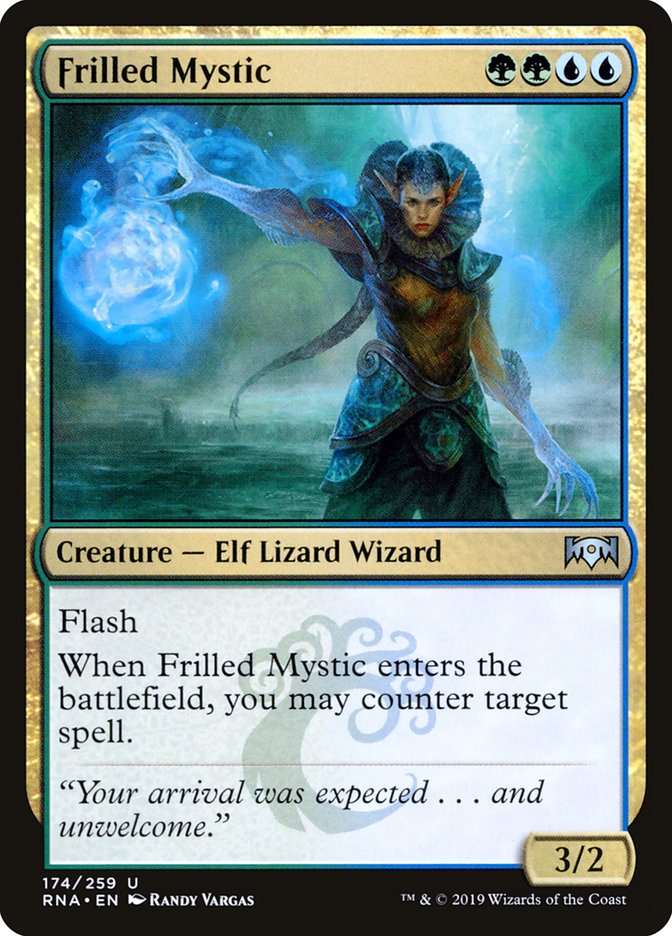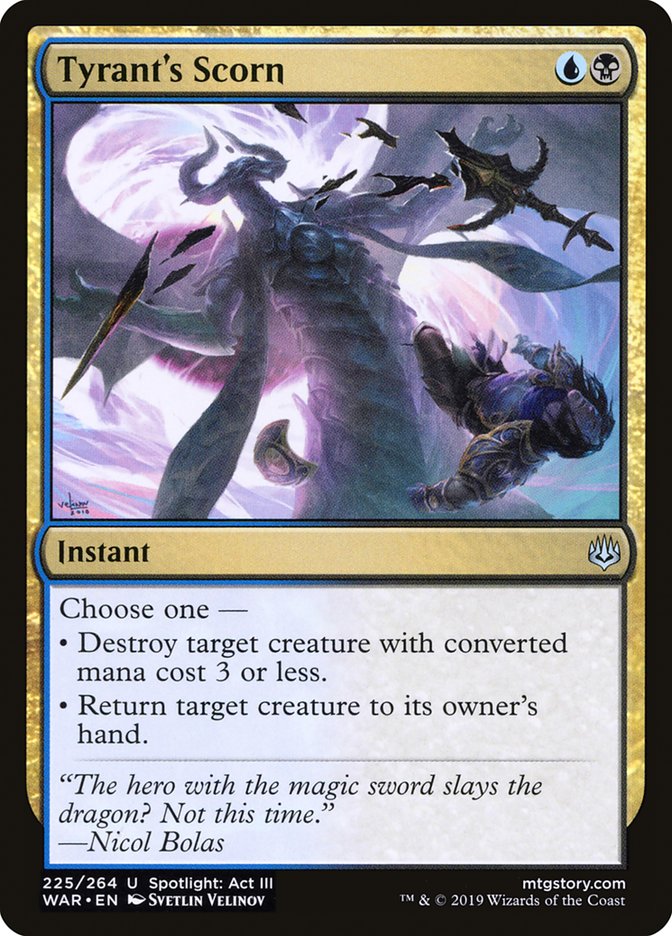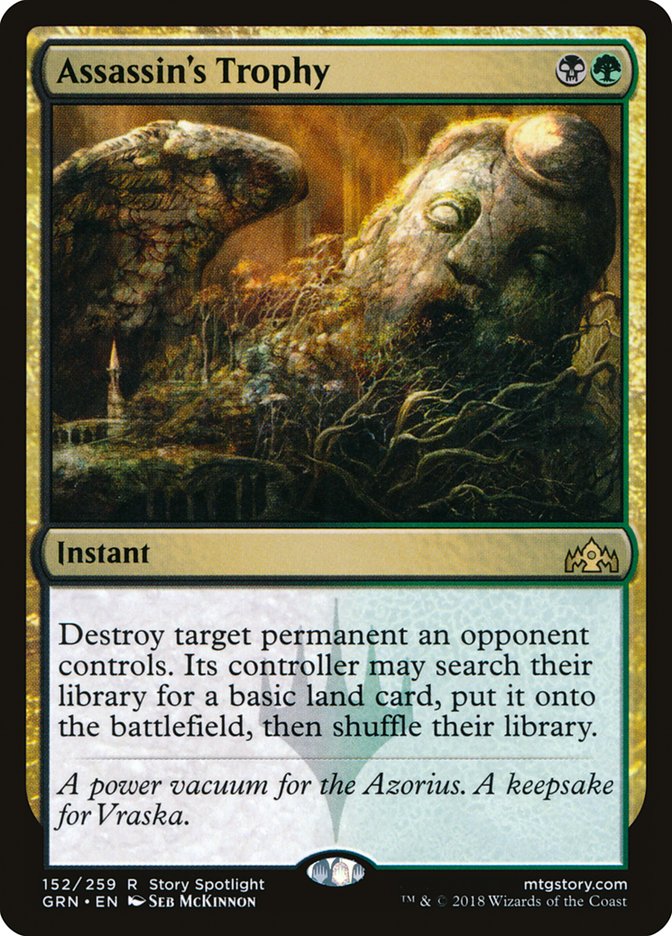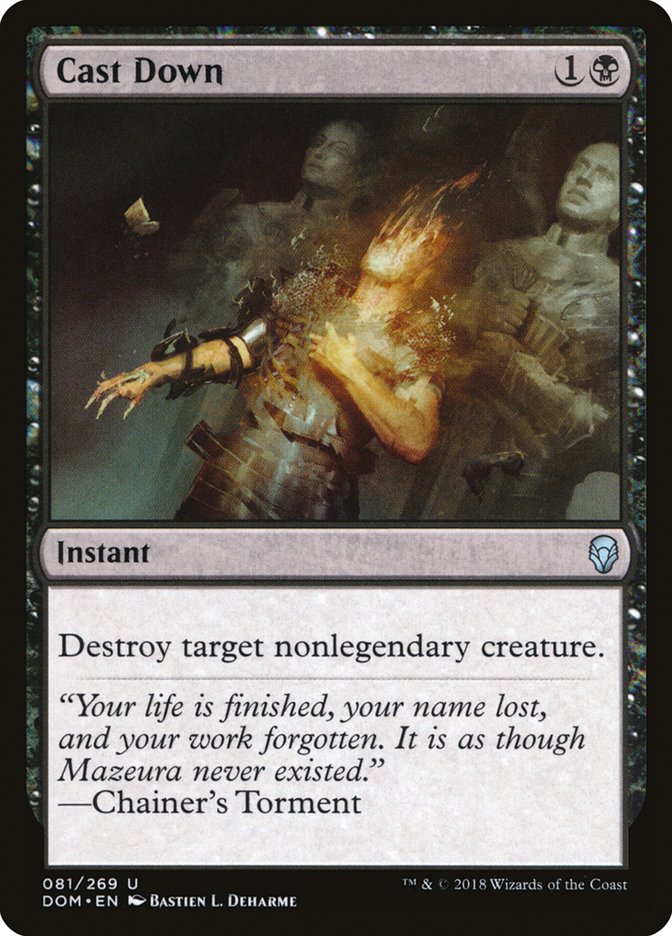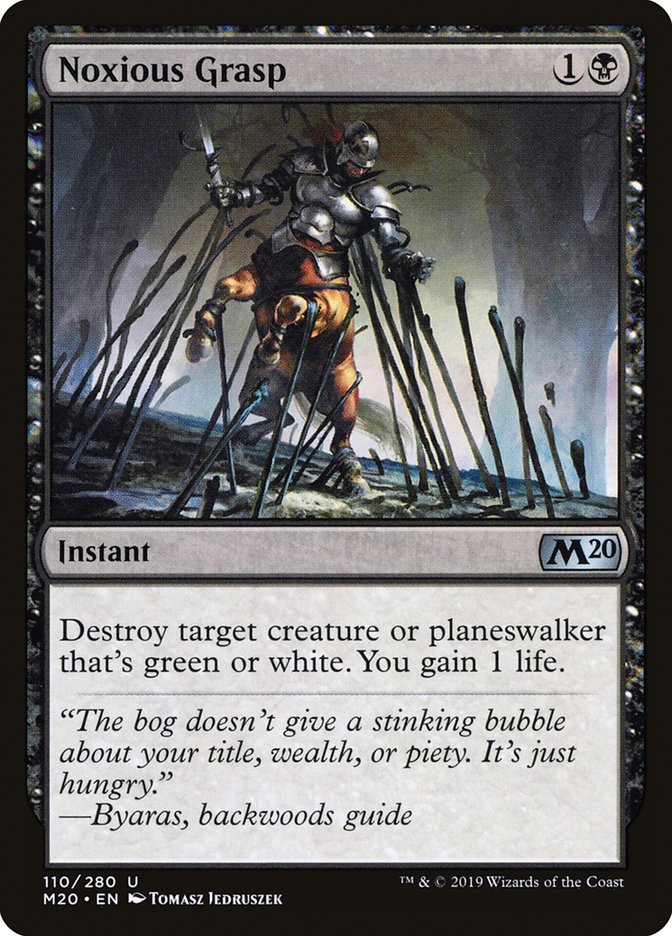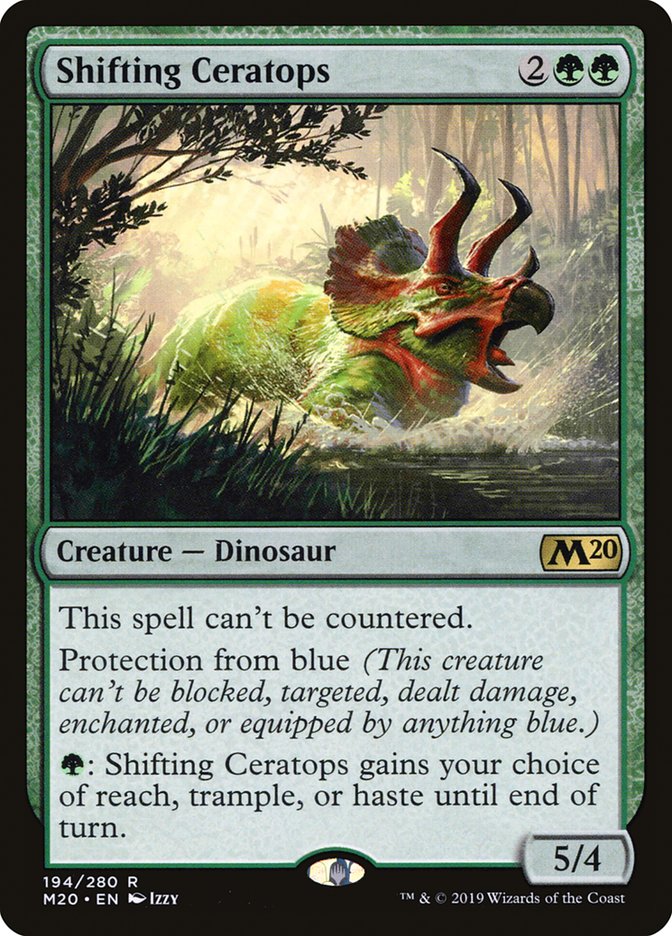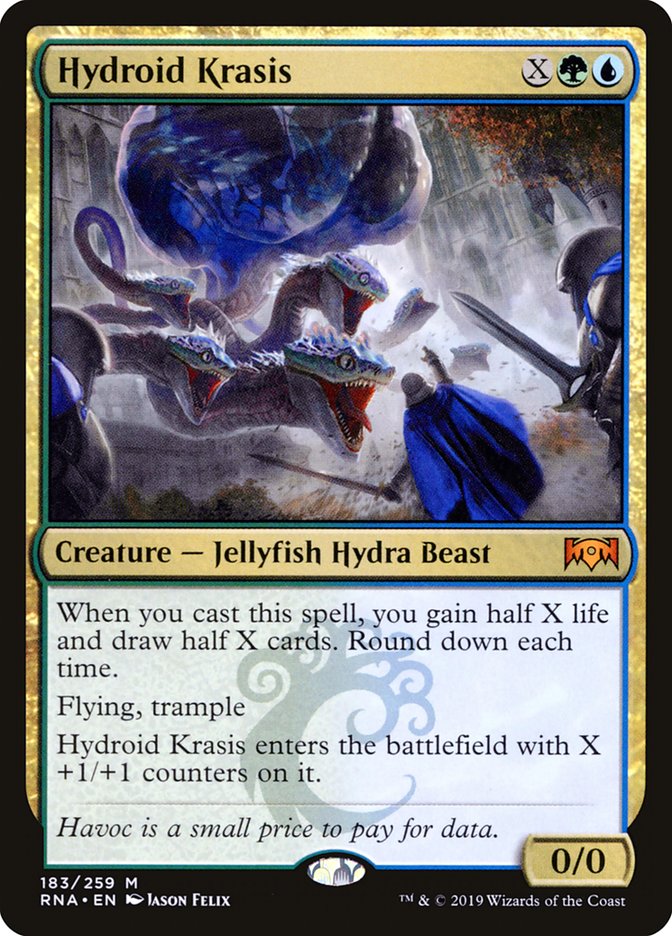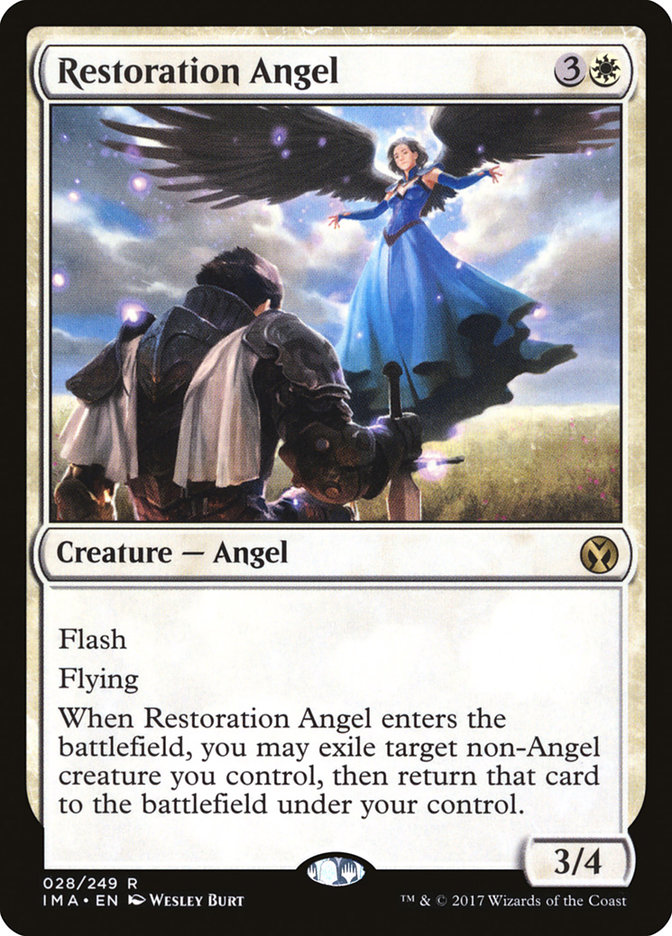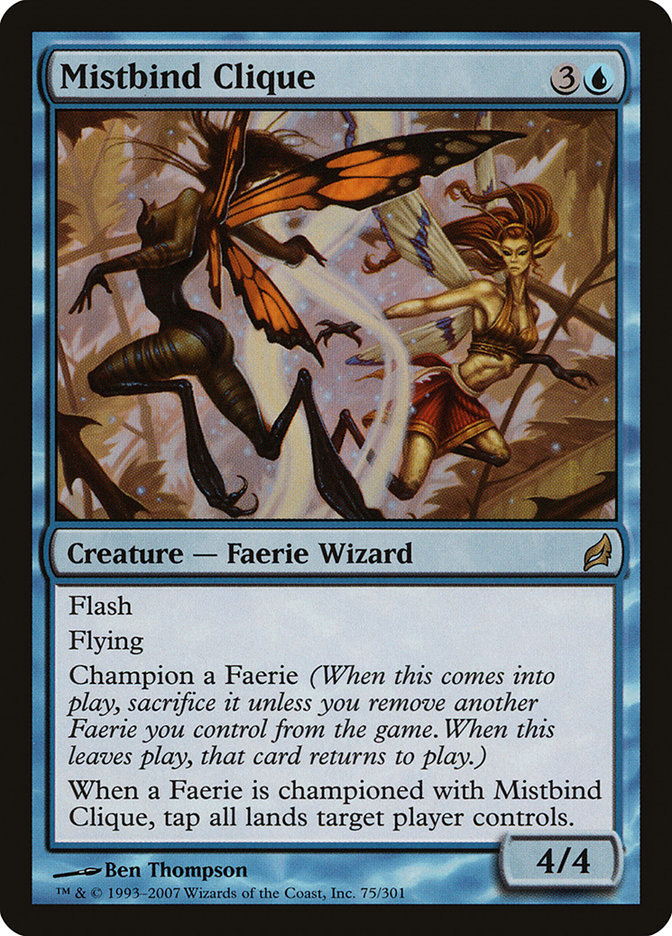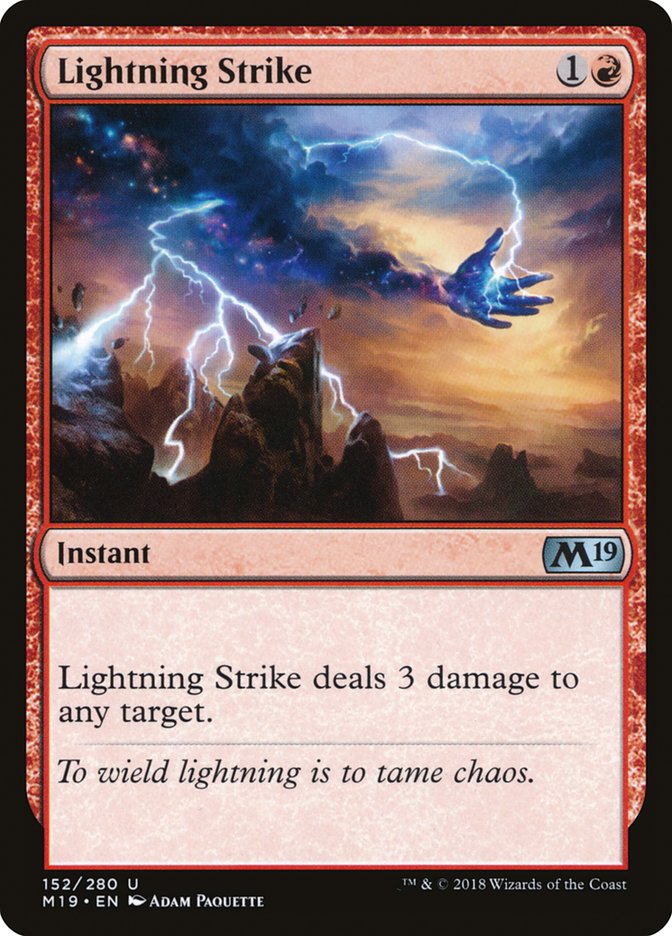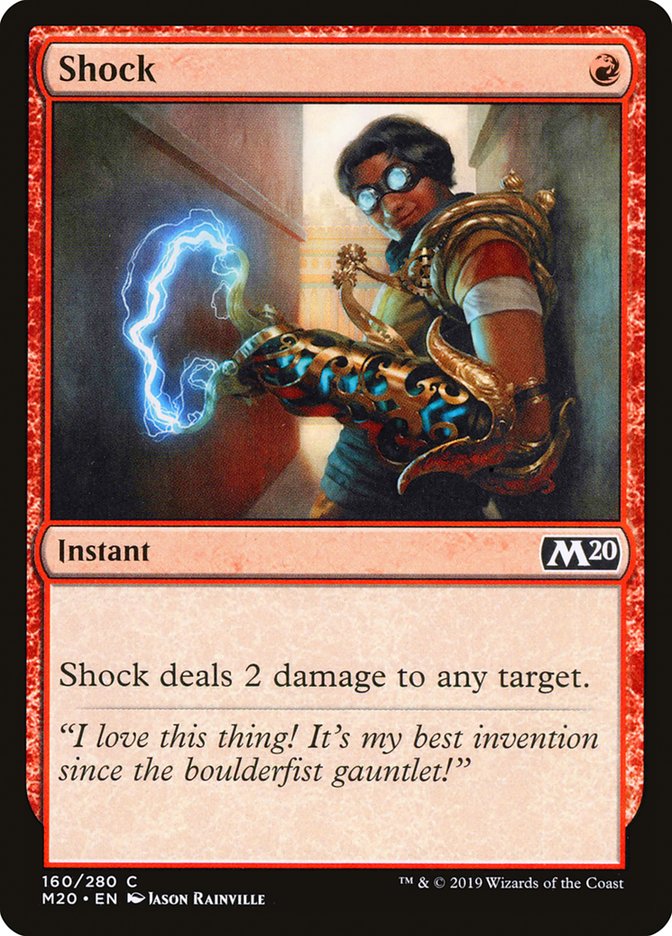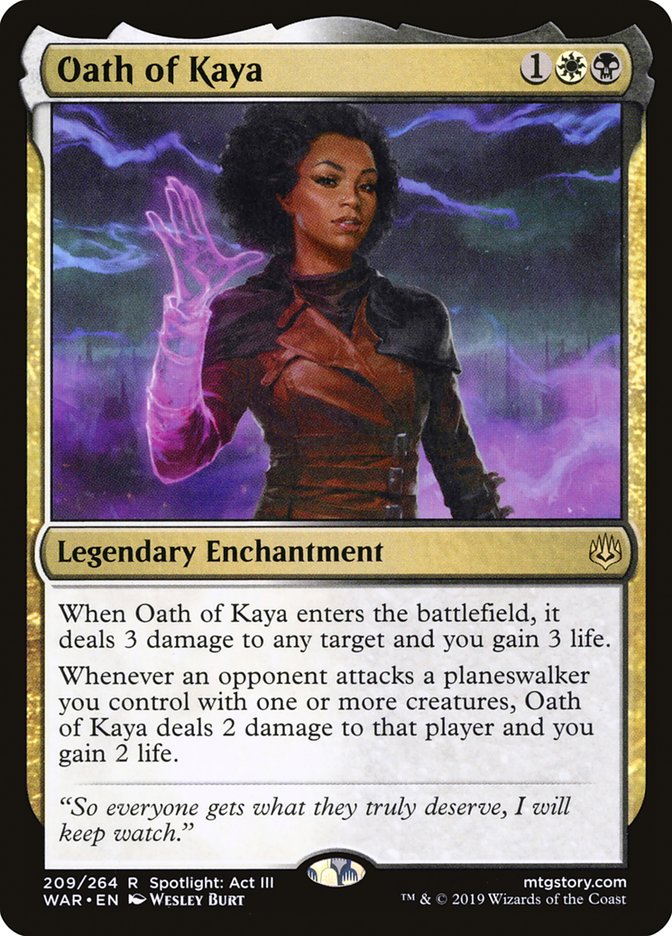Core Set 2020 Standard is still young, as the Standard Classic and the Standard portion of the recent Team Constructed Open at SCG Philadelphia marked the second week the set has been legal in paper Magic. Bant Scapeshift has taken the format by storm after its relative dominance both at in Philadelphia and GP Denver this past weekend. Patrick Chapin and Sam Black have already discussed the dominance Scapeshift had last weekend, so I’ll leave the deep dive on that particular topic up to my fellow colleagues (CEDitor’s Note: Patrick’s article is here, while Sam’s is here).
However, a deck that made my article two weeks ago represents the beginning of the archetype that I’m interested in discussing this week:
Creatures (20)
Planeswalkers (3)
Lands (24)
Spells (13)
Sideboard

Understanding Standard Flash Decks
I stumbled my way to 24th place at SCG Worcester after an 0-2-1 start that included punting lethal and showing up ten minutes into Round 1 when I had the Jace table feature match. Do as I say, not as I do, as charisma can only take someone so far before you have to actually start winning matches.
I’ve felt stronger with the Simic or Simic/X Flash archetypes than I have felt in Standard in quite a while, and there are several reasons why these decks are poised to succeed in Core Set 2020 Standard. So many matchups are overwhelmingly good for you, and the high density of counterspells and cheap instant-speed threats lets you prey on a lot of the decks that operate at mostly sorcery speed, including Bant Scapeshift and Simic Nexus.
Nightpack Ambusher is the best card in these decks by a relatively wide margin. It allows you to keep pace with green creature decks because you don’t have to counter everything when you can accrue seven power worth of blockers in one turn cycle. Flash decks often operate along a sliding scale with regards to what gets countered and what doesn’t. Usually you’ll have to let a certain number of things resolve throughout the course of a game and work under an “If this resolves, I’ll figure out how to deal with it” mentality.
Nightpack Ambusher is so good in this strategy because it provides a large enough flash body that it situationally acts as removal and card advantage. It acts as removal because sometimes opponents will attack their smaller creatures into four open mana and the Wolf gets to ambush something and stay on the battlefield. Admittedly, this happens much less after the first week once people know what you’re doing, as now they simply don’t attack into four or more open mana.
It acts as card advantage, though, partially for the same reason. If you kill your opponent’s creature and your Nightpack Ambusher stays on the battlefield, you’ve gained some card advantage off your pseudo removal spell. But the other way Nightpack Ambusher provides card advantage is arguably more important.
When playing these types of Flash strategies, your counterspells are precious, especially the hard counters. Nightpack Ambusher and the tokens it creates invalidate a percentage of the things your opponents may draw in the future. For example, it’s extremely unlikely that you’ll need to counter vanilla creatures, anything without flying, or anything without a realistic removal or card advantage ability. There are even several planeswalkers that you’ll be able to pressure with the Wolf and the tokens that you no longer need to counter. Nissa, Who Shakes the World and Sorin, Imperious Bloodlord, for example, are rather tough for your deck to deal with when you don’t have pressure and rather academic to deal with when you do.
I touched on this two weeks ago when I previewed Simic Flash for SCG Worcester, but to reiterate, Nightpack Ambusher does a great job of mitigating the awkwardness of Frilled Mystic. Brineborn Cutthroat, Merfolk Trickster, and Spectral Sailor are also important because they let you get ahead on the battlefield while leaving up mana as the game progresses. This is the trademark functionality of a flash deck: adding pressure at instant speed while always using your best answer for each threat they deploy.
Frilled Mystic has a great body when you’re pressuring the opponent and need a few extra points to cut the clock by a turn, but Frilled Mystic has an incredibly clunky mana cost when you’re behind. One of the biggest problems with the Simic Flash deck I played at SCG Worcester was that it had essentially no removal. If you fell behind, the opponent would simply attack you and pass. They had no reason to play into your counters, since they could already win with the few things they had on the battlefield. After all, you couldn’t realistically remove anything once it resolved, save for the few Unsummons that were useful but were also stretched very thin.
I wanted to continue working with the Flash strategy and was planning on running back the same deck for the Standard portion of SCG Philadelphia last weekend. On the ride down, I had stopped briefly and was looking at some decklists from a recent Magic Online League when one of the 5-0 decklists caught my eye:
Creatures (20)
Lands (24)
Spells (16)
Sideboard

This deck played removal spells! I was so excited because it meant that you didn’t immediately lose when something resolved.
This removal suite covers most of your bases for Core Set 2020 Standard. I panicked last-minute when I saw that there were so many two drops in the deck, so I shaved a Cast Down and a Syncopate for two copies of Disfigure, as I wanted to be able to double-spell more often and earlier, and I wanted to be able to keep pace without always having to shock myself.
Expanding to three colors provides a lot of options, but at a cost, since the manabase is much more damaging than it was previously. Because Merfolk Trickster was eschewed in favor of Dire Fleet Poisoner and because Sinister Sabotage was replaced by Lookout’s Dispersal in this Sultai version, we actually have a better manabase as far as casting our spells goes, but you definitely take some damage along the way.
I also altered the sideboard slightly when I changed some things last-minute:
3 Negate
Noxious Grasp is one of the best sideboard cards in Core Set 2020 Standard and I believe it singlehandedly justifies the black splash in these decks. When I saw the 5-0 list had four Grasps in the sideboard, I knew I had to give it a shot, since the card solves a bunch of your biggest problems.
Noxious Grasp answers all these cards while also dealing with Nissa, Who Shakes the World; a bunch of different mana creatures; Gideon Blackblade; and Risen Reef. Further, Flash decks occasionally get into racing situations and the extra life can go a long way towards screwing up math for opponents. Notably, Noxious Grasp is one of the best cards to counter with Veil of Summer, so be careful regarding your timing with it.
Combating Bant Scapeshift
Interestingly enough, the two cards Noxious Grasp helps the most against are four-ofs in the deck that has just taken over Core Set 2020 Standard with its performance at SCG Philadelphia as well as its utter dominance at GP Denver:
Creatures (12)
Planeswalkers (4)
Lands (28)
Spells (16)

I’ll say something that not many other advocates of Core Set 2020 Standard decks can honestly say right now:
Here are just some of the reasons why:
- Bant Scapeshift actually plays a few creatures, so you can get some semblance of value out of your removal spells.
- Bant Scapeshift plays very little removal itself, so beating Teferi, Time Raveler is usually as simple as playing a couple of cheap creatures and attacking it.
- Frilled Mystic is a hard counter for Scapeshift in all pre-sideboard games where Teferi isn’t on the battlefield and once you have six mana; you can pick it up with Tyrant’s Scorn for a second chance at countering a Scapeshift.
Once you go to sideboard, their deck certainly gets better against you, since they have Dovin’s Veto and Veil of Summer coming in to make your counters way worse. But you get to circumvent Veil with Aether Gust and add some copies of Negate to replace those Essence Scatters and help keep little Teferi off the battlefield. Most importantly, you can swap Cast Down and Disfigure for Noxious Grasp, which kills their best cards in Teferi, Time Raveler and Hydroid Krasis while also being a great hedge against Shifting Ceratops, which big mana green decks often have but also isn’t that good against Sultai Flash. Still, we will almost always get sideboarded in against us because we play counterspells.
There are numerous interesting interactions regarding their sideboard cards, like Veil of Summer and Dovin’s Veto, and our sideboard cards, like Negate and Aether Gust. Notably, Aether Gust can put a spell on top, but it doesn’t technically counter it. This can buy some time against a Ceratops or give you another turn against a Scapeshift that was backed up by Veil of Summer. The most important interaction to remember is the one where they use Teferi to protect their Scapeshift.
They’ll often wait until they have seven or more mana and cast both spells in the same turn so that the mana from the Flash deck is more heavily taxed. You can get tricked here if you have situational counterspells and you don’t sequence optimally with them. Remember, if you can kill Teferi with the creatures you have on the battlefield, it might be correct to use a Syncopate to tap them below Scapeshift mana while still being able to leave up Lookout’s Dispersal. This might be better than tapping out for Frilled Mystic on Teferi because they can simply resolve Scapeshift once you’re tapped out.
Overall, I think Sultai Flash is pretty good against Bant Scapeshift, though I certainly feel more favored when I have an early Brineborn Cutthroat.
I ended up playing the above Sultai Flash list with two Disfigures and that new sideboard in the Team Constructed Open, where I had a personal record of 6-3, and the Standard Classic, where I finished 5-2-1 (I lost playing for Top 8 to eventual winner Cain Rianhard and his Bant Ramp deck). My record on the weekend was 11-5-1, nearly a 66% win rate. Now, I realize this isn’t a stellar record, but I was beating good decks with regularity.
The one constant on the weekend was friends and peers on the SCG Tour kept telling me that my deck was bad. Several players whom I respect said that it wasn’t good enough to win. They also uttered some interesting statements that inspired me to write the following section.
Misconceptions About Flash Decks
1. “Flash Decks Can’t Beat Teferi, Time Raveler.”
Let’s dismantle this notion first because it seems to be the most prevalent thought regarding the Flash archetype right now. Teferi, Time Raveler is likely the scariest card in the format for the Flash decks to deal with. However, it’s not too hard to kill with your little one- and two-drops. If you have a one-drop and a two-drop, you can prevent your Teferi-wielding opponent from being able to -3 and get maximum value. The card is only totally lights out in Game 1 when they’re on the play. Otherwise it’s manageable.
Post-sideboard games, you have four copies of Noxious Grasp and those really help you deal with Teferi. Against Esper and Bant Scapeshift you also have copies of Negate. The accurate statement that is derived from this one is more like, “Flash decks can’t beat Thought Erasure into Teferi, Time Raveler when backed up by removal and Esper is on the play,” but this is a situational statement and it doesn’t really mean anything.
It is a little concerning that your deck and sideboard must be explicitly constructed to account for Teferi, Time Raveler, and this is most apparent when you see four Noxious Grasp, three Negate, and three Shifting Ceratops in the sideboard. It would be more concerning if those cards were incredibly narrow, but they’re some of the best ways to neutralize Teferi while also having a wide swath of applications throughout the format.
Teferi is good against Flash, but the notion that Flash can’t beat it is a combination of hyperbolic and ignorant.
2. “Flash Decks Are Only Good at the Beginning of a Format.”
This is an interesting point of discussion because the evidence to support this is almost always a Flash deck performing well. The deck will make a Top 8 in the first or second week of a new Standard format and everyone will say that it’s because “nobody knew what to play around” and the results from Flash decks are often discounted as gimmicky.
This is true to an extent. Flash decks are certainly stronger when nobody knows what’s going on. Nightpack Ambusher and cards like Restoration Angel and Mistbind Clique are simply eating small attackers for the first event or two of the formats where these decks began. Their power is manifested in a much more subtle way once people know about them, however. Instead of getting punished when you have the Ambusher / Angel / Clique / Torrential Gearhulk, they’ll get punished when you don’t have it and they choose to play around it.
I think there’s a bit of results-oriented thinking regarding the delta between “getting” people and just having a solid gameplan that puts people in tough spots. Once people stop walking headfirst into tricks, you’ll start gaining percentages from all the times when they think you have it and you actually don’t. The decks get worse, but only slightly, because the benefit from eating their creature with a Wolf or catching their best spell with Frilled Mystic is much greater than getting an extra turn or a few extra life points when they’re playing around stuff.
There’s some nuance to building a Flash deck and the counterspell suite is often very basic at the beginning of a format. Flash decks can actually be better when they’re built in a format where the decks and tiers are more clearly defined. A defined format means you understand exactly what you’re reacting to. Now, Flash isn’t purely reactive, even though it is, by definition, casting spells in response to those of the opponent.
If that was confusing for you, you’re probably not the only one.
Even though you’re reacting to what the opponent is doing, you’re essentially crafting game states where they’re forced to walk into the spells you’re holding. Your deck is actually proactive in a lot of ways because you’re explicitly dictating the pace of the game with your cheap threats and answers. This is much easier when your counters and removal (and to a lesser extent your threats) line up favorably with the format. For example, Nightpack Ambusher is great right now because most of the popular removal is cheap and damage-based. It targets the green mana creatures, planeswalkers, and the threat base in Mono-Red Aggro.
Lightning Strike, Shock, and Oath of Kaya are all great and efficient, but not one can deal with Nightpack Ambusher by itself. These removal spells define the format because they’ve been dictated by the relatively high density of low-end threats people play. If everyone was playing large expensive creatures and planeswalkers like Skarrgan Hellkite, Rekindling Phoenix, or Liliana, Dreadhorde General, you would see a ton of Vraska’s Contempts, Cast Downs, and Assassin’s Trophies. Therefore, this format would be much more hostile for a card like Nightpack Ambusher, but at present it is almost always coming with a free Wolf token.
Even though Week 1 and Week 2 have passed us by, Sultai Flash will continue to be a good choice because people are being forced to react to Llanowar Elves and Runaway Steam-Kin. Flash decks can be good deep into a format because they often inherently contain cards that make your opponent’s best cards bad: cheap counters, instant-speed threats, card draw, catch-all removal.
That’s the formula for a good flash deck and always will be.


